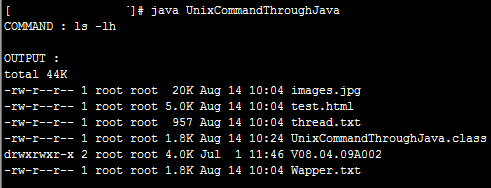
How to convert list to read-only list in Java?
By using Collections class we can convert List to read-only List. This can done by using Collections.unmodifiableList(list) function from Collections class. By this we can't add or remove any element from the List. Not only List we can make other Collection Objects like Map, Set also to read-only as like below.
Collections.unmodifiableMap(map);
Collections.unmodifiableSet(set);
Collections.unmodifiableSortedMap(sortedMap);
Collections.unmodifiableSortedSet(sortedSet);
Lets see small example how to convert list to read-only list.
OUTPUT:
If we seen in above program we have added 5 values in list and we have removed 1 value "oops" from the list. Next we have converted list to read-only list by using unmodifiableList() method. Later when we try to remove "discover" value it throws UnsupportedOperationException because of read-only list. Even we can't add any value to this list.
Collections.unmodifiableMap(map);
Collections.unmodifiableSet(set);
Collections.unmodifiableSortedMap(sortedMap);
Collections.unmodifiableSortedSet(sortedSet);
Lets see small example how to convert list to read-only list.
import java.util.ArrayList;
import java.util.Collections;
import java.util.List;
public class ReadOnlyList {
public static void main(String[] args) {
List<String> list = new ArrayList<String>();
list.add("java");
list.add("discover");
list.add("threads");
list.add("oops");
list.add("servlet");
System.out.println("LIST : "+list);
// Removing "oops" from from list
list.remove(3);
System.out.println("LIST : "+list);
// Making list to read-only
list = Collections.unmodifiableList(list);
// trying to removing "threds" from list
list.remove(2);
System.out.println("LIST : "+list);
}
}
OUTPUT:
LIST : [java, discover, threads, oops, servlet]
LIST : [java, discover, threads, servlet]
Exception in thread "main" java.lang.UnsupportedOperationException
If we seen in above program we have added 5 values in list and we have removed 1 value "oops" from the list. Next we have converted list to read-only list by using unmodifiableList() method. Later when we try to remove "discover" value it throws UnsupportedOperationException because of read-only list. Even we can't add any value to this list.




